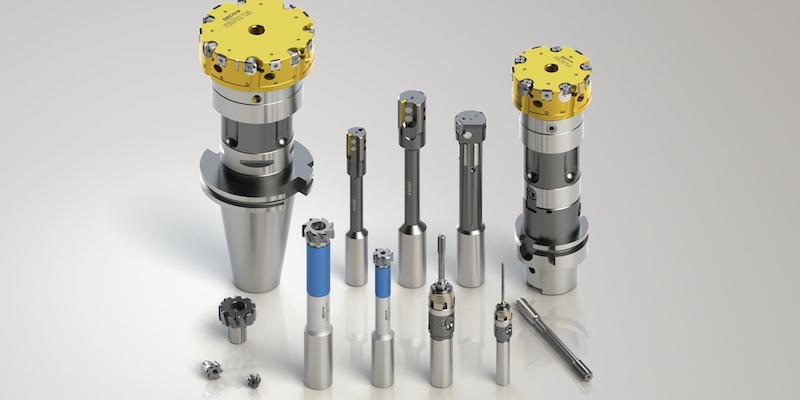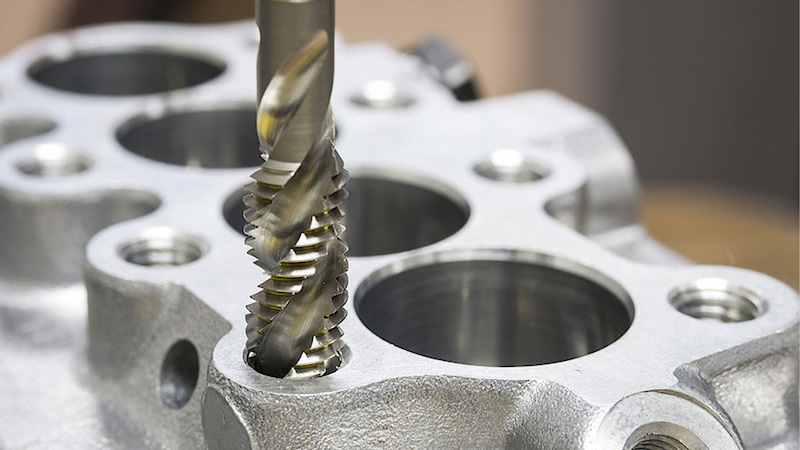Reaming is a machine designed to enlarge holes previously drilled in a project. The main objective of reaming is to enlarge the pore opening to have the correct size, uniform shape and smooth inner surface.
What happens to the reaming machinery?
The reaming process requires the use of a special tool called a reamer. Reamers are rotary cutting tools used in the metalworking industry and come in varying degrees of accuracy. CNC turning parts use a precision reamer to achieve exceptionally high accuracy and smoothness. In contrast, irregular reaming tools are often used to remove the burr from the burr and straightforward spreading operations. In the reaming system on the lathe, the tail supports the reamer.
What are the different types of reamers in reaming machining?

Adjustable Hand Reamer:
The adjustable hand reamer is a versatile tool with adjustable blades for a unique look. Typically used for precision reaming in manual applications.
Straight Reamer:
A straight drum is a circular instrument with a straight drum. It is used to enlarge and finish the holes to a specific size without any taper.
Hand Reamer:
A hand grinder is a hand tool designed to be used manually. Typically used for small reaming jobs where accuracy and maintenance are required.
Machine Reamer:
The machine reamer is specifically designed for use in machine tools. Ideal for large reaming jobs using power tools or machinery.
Rose Reamer:
A rose reamer is a specialized tool with a tapered end that resembles a rose petal. It is usually used to make conical holes or chamfers.
Shell Reamer:
Shell reamers are designed to drill holes in thin-walled materials such as sheet metal. It generally has a coral-like structure.
Flat Reamer:
The flat reamer has a reed that gradually increases in diameter towards one end. It is commonly used for drilling or punching conical holes.
Integrated Reamer:
An integrated reamer is a versatile tool that combines parts of the reamer, such as straight and narrow parts. Suitable for reaming applications.
Complications and root causes of the reaming process
It's not uncommon to encounter problems during reaming, whether you're reaming on CNC machining lathes, milling machines, or other machines. Choosing the right tools and systems is essential to successfully deal with these challenges.
Largest Diameter:
Cause: Outside diameter of the reamer formed is too large; Reamerdhare Burrs; too high a cutting speed; improper feeding or leftover quantity; improper use of water cutters; improper copper face; Reamer is bent, and so on.
Negative Circle:
Cause: Using too long reamer; vibration or chatter during reaming; Lead Angle too small; reamer tip too narrow; Surface rules such as notch and cross holes in the inner hole; wrapping thin-walled parts too tightly causing distortion; loose spindle holder and others.
High Roughness:
Cause: Too fast cutting speed; improper use of cutting fluid; the edge of a heavy tool; solid surface tool; remaining areas not moulded; quick chip removal issues; excessive wear of the reamer; Burrs or chipping at edges, and so on.
Minimum Reamer Life:
Cause: Poor choice of tools and materials; The reamer heats during grinding; inadequate cutting fluid flow to the cutting area; Simple too high ceilings, among others.
Guidelines for effective reaming procedures

Use sharp reamers to do reaming:
The use of a sharp reamer is essential for accurate and clean results in the reaming process. A dull or damaged reamer can increase friction, cause poor surface finish, and even cause overheating. Check and sharpen the reamers regularly to ensure a smooth cut.
Seal the work area from dust:
Dust and debris in the rapid manufacturing area can adversely affect the reaming process. Accumulated particles can increase wear on the reamer, compromising accuracy and resulting in a suboptimal finish. Use effective dust removers and ensure a clean work environment to ensure the longevity and efficiency of the vacuum cleaners.
Use the quality chuck:
The chuck plays an essential role in protecting the reamer during reaming. Choose a high-quality chuck that provides secure and precise clamping. A reliable chuck ensures stability, minimizes vibration and helps keep the entire reaming operation accurate.
Make sure the cutting fluid reaches the cutting edge:
Adequate lubrication is essential for proper reaming. Check that the cutting fluid reaches the cutting edge of the reamer properly. Proper lubrication not only reduces friction and heat but also helps eliminate the chip, making reaming more efficient and successful.
Check that the reaming tool overhangs from the spindle:
The right tool hanging from the spindle is essential for best results. Too little or too much can reduce vibration, distraction and accuracy. Follow the manufacturer's recommendations for hanging machines to maintain stability and accuracy during reaming.
Avoid obstacles:
Clogs in the reaming process can interfere with chip removal, resulting in proper surface finish and possible mechanical failure. Use effective chip removal techniques, such as proper coolant flow and chip breakers, to prevent obstruction and ensure continuous and smooth reaming operation.
Set the correct cutting speed and angle for reaming:
Cutting speed and cutting angle influence the efficiency and quality of reaming. Adjust the cutting speed depending on the material being created and follow the recommended parts. Maintaining proper parameters helps prevent issues such as overheating, tool wear and poor surface quality.
Select the reamer material according to the workpiece material:
Selection of the right reamer material based on the job application is critical to successful reaming. Different materials require specific reamer designs to ensure efficient cutting and long tool life. Consider factors such as hardness, abrasion, and heat resistance when choosing the suitable reamer material for the job.
To sum up, reaming seems to be a crucial and difficult step in precision machining that improves the surface quality and dimensional accuracy of drilled holes in the work piece. Specialized instruments and cautious attachment methods. Reaming Ho guarantees the desired specs and a round aperture.
The accuracy and attention to detail required for a successful reaming program are highlighted by measurements of tool sharpness, environmental cleanliness, chuck quality, use of effective cutting fluids, correct tool flotation, chip removal, cutting speed, and material selection.
Contact Us
TEAM MFG is a professional manufacturer who offer CNC machining, rapid prototyping services, injection molding services etc to meet your low volume manufacturing needs. Contact our team today!





















